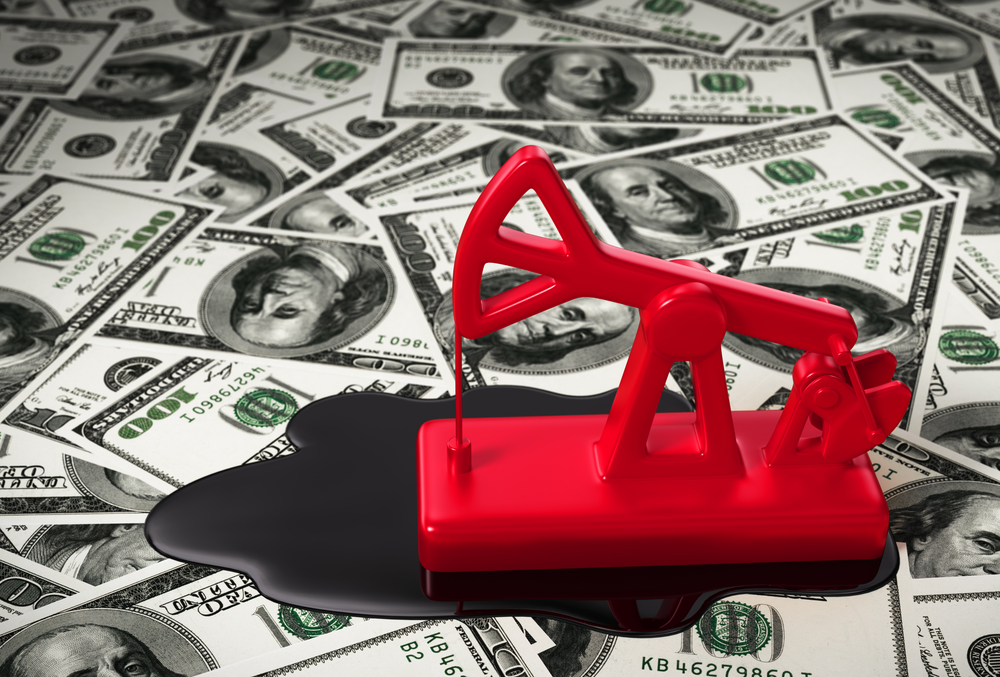Oil prices are on the rise as traders are starting to see signs of production destruction. What is production destruction? It is the opposite of demand destruction. When prices go too high we see demand destruction or demand fall. When prices go too low we see cut backs in spending and investment that will call production to fall. We are now seeing the early stages of production destruction of a mammoth scale that will be felt for years to come.
While oil prices seemed to focus on the Energy Information Administration (EIA) report that showed that oil supply increased by 2.874 million barrels the real story was another drop in U.S. oil output that fell for the eight week in a row. It seems that the trend of falling output may be accelerating. The EIA reported that U.S. oil production fell to 8.825 million barrels a day, down from 8.938 million barrels a day last week.
This comes on the same day that Shell Oil profit fell by about 83% and Shell’s chief financial officer, Simon Henry, warned that “In very simple terms, we’re taking costs out of projects, and projects out of the funnel.” Shell said it cut its capital spending budget another 10%, to $30 billion this year, which in turn will lead to less barrels down the road.
It is not just Shell. The Wall Street Journal is reporting that “The world’s largest energy companies are sidelining big ideas that they touted just a couple of years ago as the future of the industry.”
The Journal says that “From Australia to the U.S. Gulf Coast, the casualties include ultra-deep-water drilling projects, huge boats that serve as floating liquefied natural gas factories and technology that could drastically reduce emissions from burning fossil fuels. Royal Dutch Shell PLC, Chevron Corp. and Australia’s Woodside Petroleum Ltd. are among the big companies to pull back or delay ambitious projects.
The Journal says that “According to information and analytics firm IHS Inc., the oil-and-gas industry spent about 15% less on research and development in 2015, when crude oil prices averaged roughly $50 a barrel, compared with 2014, when prices averaged close to $100 a barrel.”
Without that research and spending it is clear that the innovation that has allowed the U.S. to once again be a major force in global oil production will be put on hold. With less U.S. output the price of oil will be more fearful of geopolitical risk factors. Risk factors that are on the rise. In Iraq the fight against ISIS is intensifying putting oil production at risk. We saw two wells controlled by ISIS up in flames yesterday. Reuters reported that explosions at two oil wells, near territory controlled by Islamic State in northern Iraq, halted production on Wednesday as firefighters worked to put out the flames, oil officials and security sources said. The field has a maximum production capacity of 15,000 barrels per day (bpd) but was producing around 10,000 bpd before the attack, said officials from the state-run North Oil Company that operates the reservoir.
In the meantime, the oil market seemed to failed to focus on the fact that U.S. oil demand and product demand is soaring and more on the crude oil build and worries about global economic growth. Refinery runs jumped to 89.7% of capacity up 88.5% from the year before. Gasoline demand rose to a whopping 9.811 million barrels a day. That is near a record high and up 5.8% from a year ago. Distillate demand came in at 4.59 million barrels of oil a day. Down from last week but trending higher up 4.3% from the same period last year. Yet overnight perhaps the actual demand numbers are overtaking slowing demand fears.
We continue to say as we have for months that we are at a generational low in the oil market. We are at what we believe is the bottom end of a historic bust cycle that will at some point be a new super spike. While the biggest risk to this call is another global economic crisis the reality is that the history of global oil prices suggests that prices will be substantially higher in the future. When you kill billions of barrels of future production we will see a shortage in the future. Plan for the future now by strategies that are long-term in focus.
Tune into the Fox Business Network where you get the power to prosper. Also if you want to trade email me at pflynn@pricegroup.com or call me at 888-264-5665. Not a Subscriber but want to be? Click Here!




